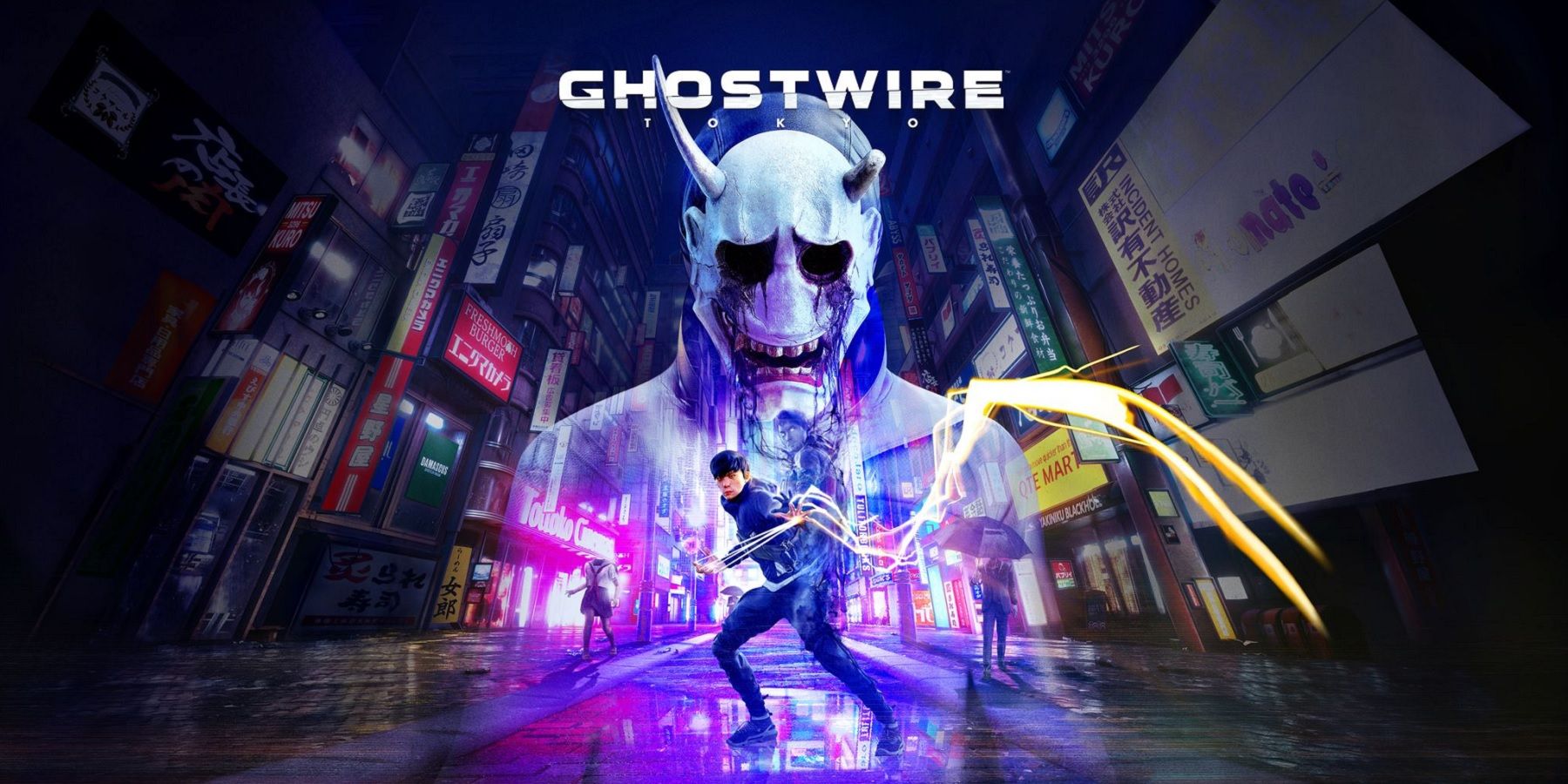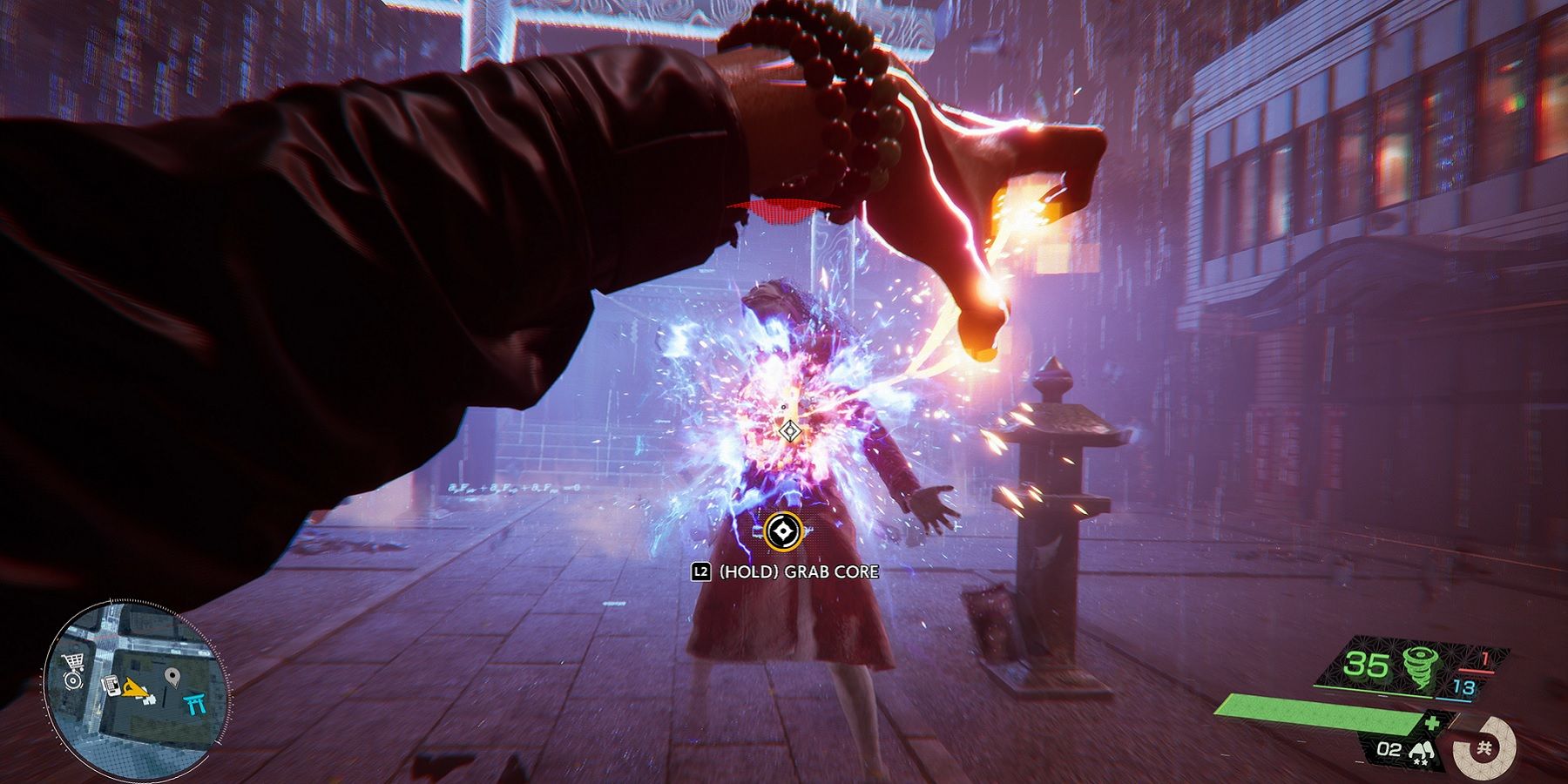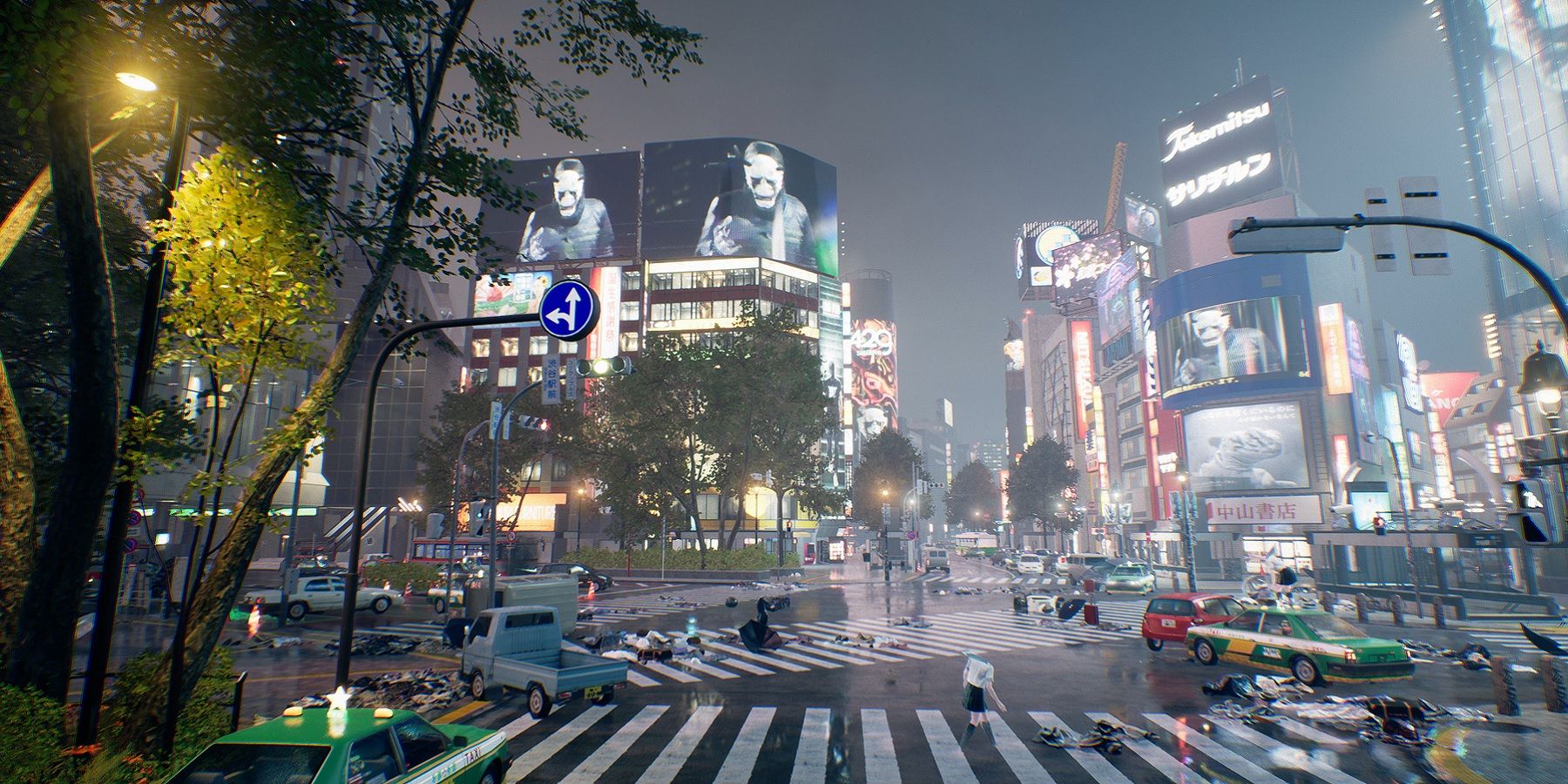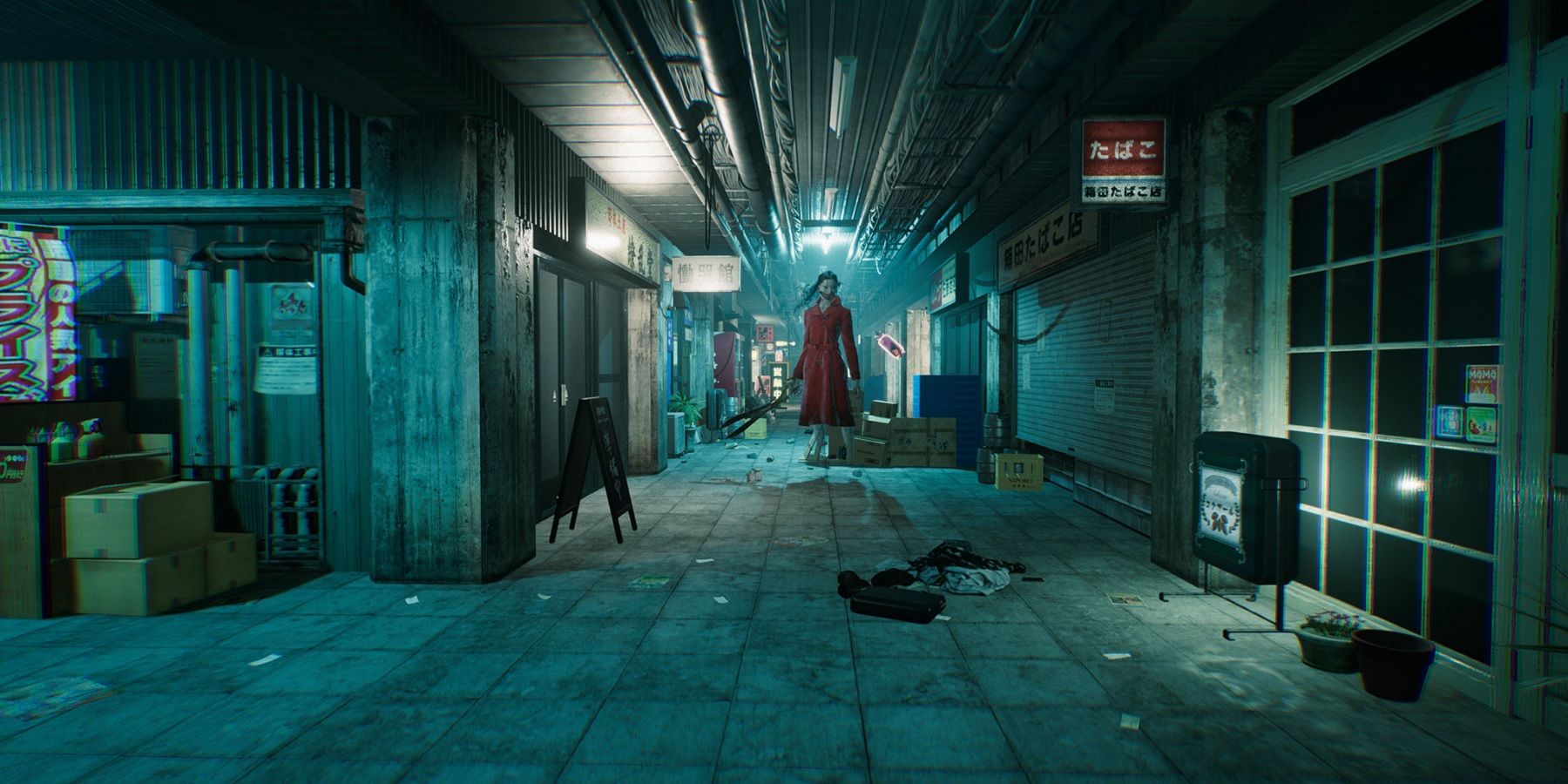One of the first games ever revealed for Sony's PlayStation 5 console was Ghostwire: Tokyo from Tango Gameworks, a Bethesda-owned development studio that is best known for its Evil Within survival-horror games. Game Rant recently viewed an extended Ghostwire: Tokyo gameplay sequence that showcased combat, exploration, the game world, and more, indicating that fans of Tango's work have a lot to look forward to later this year.
Game Rant spoke with Tango Gameworks’ Studio Director and Ghostwire: Tokyo Executive Producer Shinji Mikami, Director Kenji Kimura, and Producer Masato Kimura about what players can expect from the game when it launches for PC and PS5 on March 25.
The following transcript has been edited for brevity and clarity.
GR: Tango Gameworks' previous games use a third-person viewpoint, like Evil Within, but Ghostwire: Tokyo is using a first-person perspective instead. Why was the decision made to make a first-person game this time around?
SM: That decision was made a long time ago, when the project started. At the time, the director was Ikumi Nakamura, and simply she wanted to make a first-person game. But the intention was to have gamers experience and get immersed into the setting that we have created. And that intention was very strong and something that really made sense to everybody. We wanted to really showcase the environment.
KK: Those are the kneejerk reactions to that question, but the new director wants the player to enjoy the city environment. We want the player to be immersed in the environment that we have created and that first-person camera helps to achieve that. Also it's not just a city environment. The character does a lot of things with his hands and there's a lot of hand actions in this game, and we wanted to create this sense that those were actually your hands that are doing that. So the first-person camera is helpful in many ways and that's why we chose and stuck with that direction.
GR: The Evil Within 2 experimented with more open environments, and it looks like Ghostwire: Tokyo is taking that to the next level. Is it fair to describe it as an open world game?
KK: As a team, we are calling it more of a sandbox-style action-adventure type of game. The size of the map wasn't very important to us. We were thinking more that it was important to condense those fun elements of Tokyo and bring them together to create the map that we have in Ghostwire. And so it is a fun, sizable, and playable map. And the thing is, it's not just a horizontal map. The city is vertical. There's a lot of buildings and high-rises, and so there's another dimension to it other than just area.
MK: Going back to that question, so it's not an open world, but we are considering it as a sandbox style map, traditional Japanese-style action-adventure game, with a lot of places you can explore like the top of buildings and the other side of buildings that normally you would not be able to see. And there's a lot of fun things hidden in those different places.
GR: So in the preview we briefly saw the world map and there looked to be a bunch of side quests and things of that nature. About how long would it take players to get through the story and all the side content?
KK: There's a lot of side missions in the game. They are using themes and motifs based on Japanese folklore and Yokai and urban legend. There's probably about 30 to 40 of those, and each are probably less than 30 minutes to play. They are designed in a way that you can enjoy them if you want to take a break from the main story path. They aren't that long, and you can come back and still continue the main story without much of a challenge in regards to remembering where you were.
If you are to go through the main missions, 15 to 20 hours or so would probably take a normal gamer to get through the main missions. And if you tried to play all of the side missions, it would probably double that number to 30 or 40 hours of gameplay.
GR: Do you foresee Ghostwire: Tokyo kickstarting a franchise of its own? Or is it planned to be a one-off game?
SM: I wasn't really thinking of this becoming a very long numbered title franchise, but depending on how it sells and how consumers react to it, then definitely we can start considering a sequel.
KK: We definitely as developers want to make a fun, enjoyable experience and the more and more we start digging into it, there are more ideas that spawn for a sequel, but it all depends on sales and how the world reacts to the game.
GR: While it's been said that Ghostwire: Tokyo is more of an action-adventure game than full-blown horror, there definitely seems to be some creepy elements to it. Are there any jump scares or other moments that are meant to scare the player?
KK: As a team we've really been focused on maybe "spooky" and "intriguing" and "interesting." And "mysterious" would be another word that could best explain it, rather than "scary." We've never used scary as a keyword. Our intent was to not have much of a scary situation. It was kind of difficult in the beginning. We didn't want to make a horror game, and we didn't want to make things that were funny in a weird way. Sometimes you try to make something that's kind of scary or spooky, and it just comes off as comical. And we didn't want to go that direction. So we needed to find a good balance there to achieve what we have right now. And I'm pretty happy with the outcome.
GR: In the Ghostwire: Tokyo footage shown so far, we've seen a variety of enemies for players to fight, including spirits with umbrellas and headless school girls. About how many enemy variations will players encounter in the final game? Will there be boss fights?
KK: There are about 10. They are motifed on urban legends and folklore. These kinds of stories are usually spawned by a worry or fear that people feel a need to create a story to feel more comfortable about. The ones we chose are based on the kind of fears people feel when there are changes in stages of your life. So if you are a grade school kid entering high school, you feel worried about how you might fit in. There's all this uncomfortableness that you feel at this age. Or when you graduate school and enter a company, you feel this weirdness, uneasiness. So our characters are inspired by these types of feelings, so there's about 10 of those and variants for each.
And yes, there are boss fights. There are about four or five boss fights. They are situated in a special way unique to Ghostwire, and we hope that gamers will have a chance to experience the strangeness that we have applied to all of the elements, especially the boss fights.
SM: There are also non-enemies. There are Japanese Yokai characters that you don't actually fight against, but you do go through the map to find and look at and collect. There are about 10 of those, too. It's not just enemy characters.
MK: And some of those characters that are non-enemies may become helpful with your goals in the game. And you might actually be able to pet some of them. They're there to be cute.
GR: We've seen Akito use a bow as well as a variety of spells. Besides the bow, are there any other weapons he will have access to in the game that you can tell us about?
KK: The enemies are spiritual, so we kind of moved away from physical types of weapons. The bow and arrow is historically used in Japanese traditions; you see bow and arrow sometimes in shrines, and they are basically considered as good luck charms or things that dispel evil in a certain radius of where you are. Aside from that, there is a sub-weapon called Talisman in the game. They are little charms that you can pick up in shrines. You can throw them on the ground sometimes to stop enemies in a certain radius or throw it somewhere else to cause a noise that will attract enemies to go that direction. There are other physical elements to it, but we moved away from that since the enemies are spiritual.
GR: One of your most popular older games, Resident Evil 4, recently had a VR release. Have you had the chance to play it? Do you see VR as something that Tango might experiment with in future games?
SM: I haven't played Resident Evil on VR. Personally, I do like VR, and as Tango, we would like to look into making something for the future.
[END]
Ghostwire: Tokyo is in development for PC and PS5.




